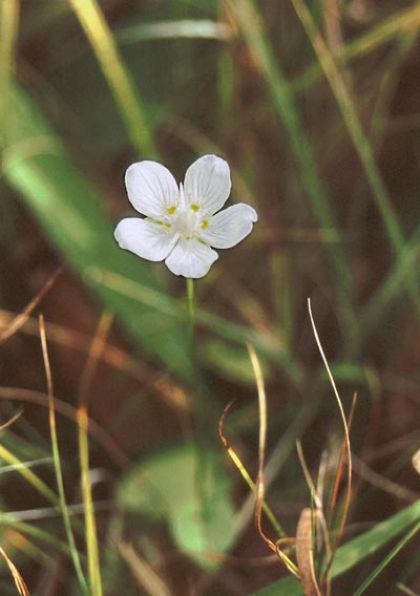My favourite wildflower is this little plant which has such distinctive features that nobody could misidentify it. To me it's the most beautiful of all and if you examine it closely through a hand lens, you will have to agree that every part of it is stunningly designed. Above all it is the flowers which are outstanding; they are white, saucer-shaped and solitary, on upright stalks which reach to 30cm at most. These flowers (15-20mm across)have 5 clearly veined petals and 5 sepals, and 5 little semi-circles of fringed stamens which are tipped with nectar-bearing glands and which alternate with 5 stamens with anthers. At the centre of the flower is the stigma which is 4-lobed. Bees and pollinating insects are attracted to the plant by a mild honey-like scent. The leaves are heart-shaped, untoothed and mostly basal. There is a single stem-leaf which clasps the stem. This flower blooms from June to September and is mostly found on marshes, fens, moist grassy places and mountains. This perennial, native plant was once classified as a member of the Saxifrage family but is now in its own family, Parnassiaceae, and of course is not a grass at all.
My first record of this wildflower is from the Burren, Co Clare in 1981. I also found it on the shores of Lough Derg, Co Tipperary. The photograph here was taken in the Burren in 2003 on slide film but under dreadful weather conditions and it is surprising there is any image at all. I hope to be able to do better next time I see this wonderful plant.
If you are satisfied you have correctly identified this plant, please submit your sighting to the National Biodiversity Data Centre

